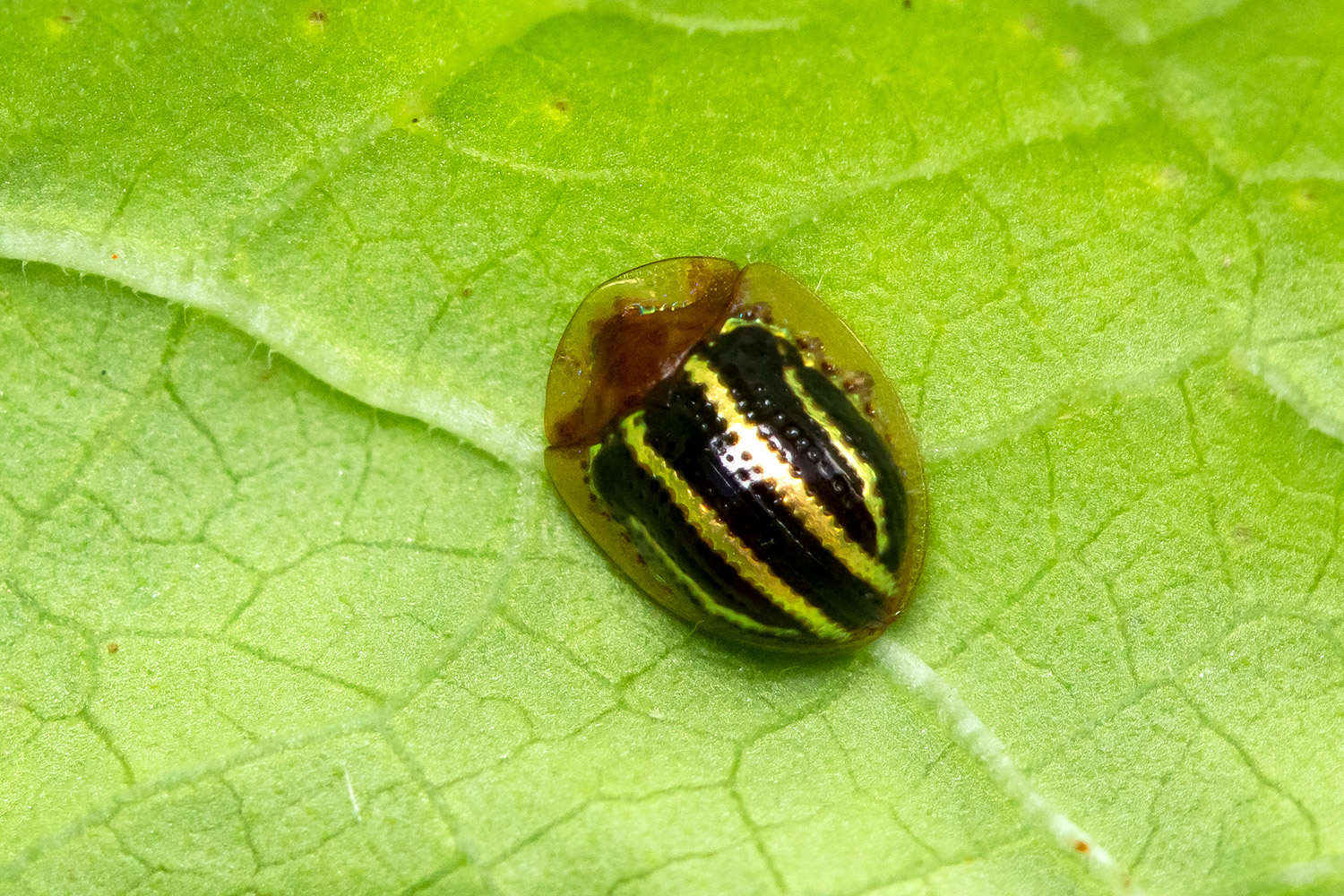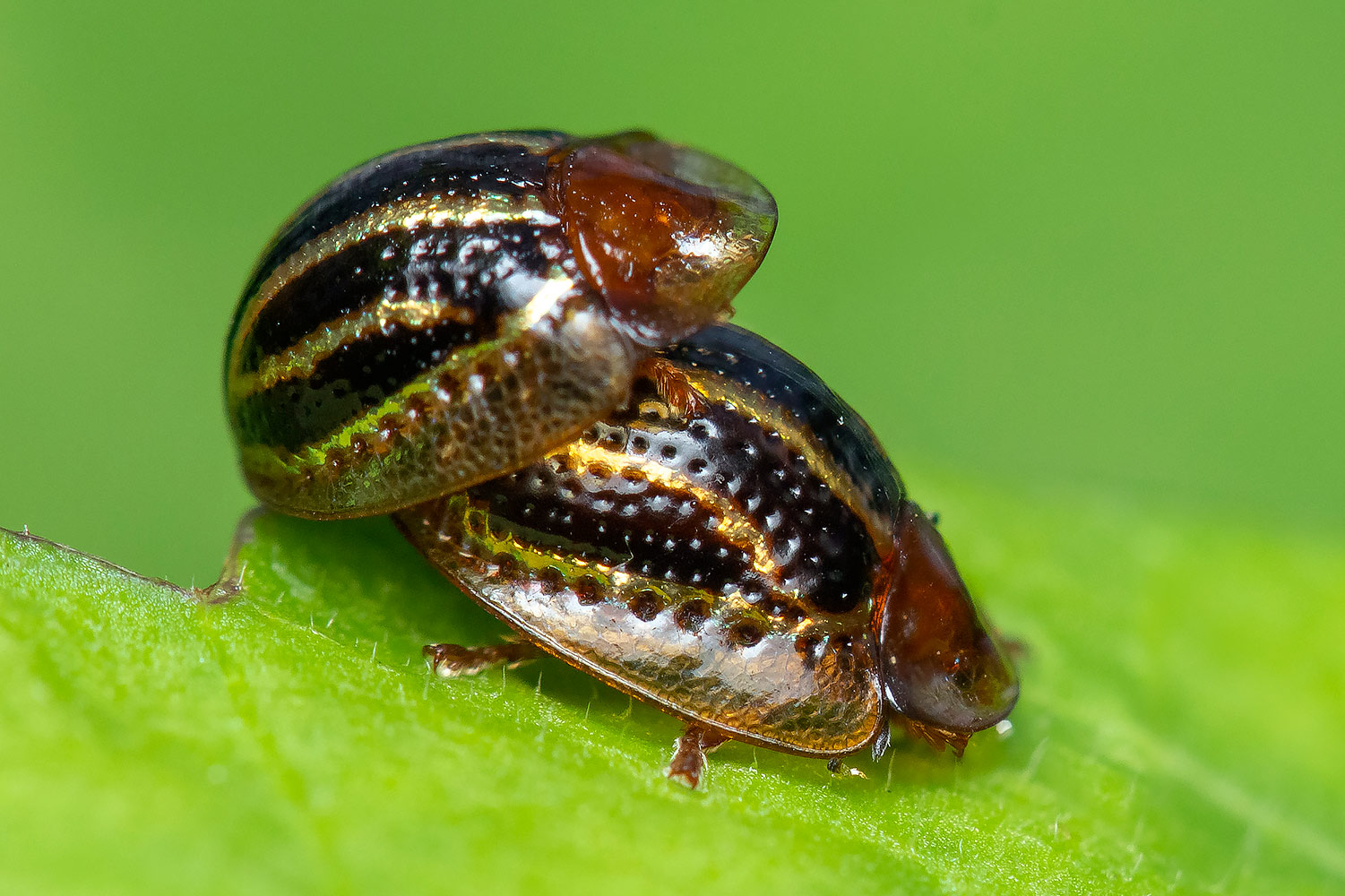
Twice-Stabbed Cactus Lady Beetle
Chilocorus cacti






Twice-Stabbed Cactus Lady Beetle
Chilocorus cacti
The Twice-Stabbed Cactus Lady Beetle, also known as the Cactus Lady Beetle, is a beneficial predatory species in the family Coccinellidae, the ladybird beetles. Despite its common name, it is not limited to cacti alone — this beetle is widely distributed and is an important natural control agent of agricultural pests, especially on fruit trees, ornamentals, and other plants.
Identification:
Adults are nearly circular in outline, with a smooth, convex dome typical of ladybird beetles. They are shiny jet black, each wing cover (elytron) marked with a single bold red spot — hence the nickname twice-stabbed. This simple yet striking pattern makes the species easy to recognize.
Defenses:
When disturbed, these beetles exude a foul-smelling substance from their hemolymph (blood). This chemical defense deters birds, lizards, and other would-be predators, increasing their survival in exposed habitats.
Ecological role:
As natural predators of soft-bodied plant pests, Twice-Stabbed Lady Beetles play a valuable role in maintaining balance in both wild and cultivated ecosystems. They are often welcomed in gardens, farms, and orchards as a natural alternative to chemical pest control.
Life cycle and habits:
Eggs & larvae: Females lay small clusters of yellow eggs near colonies of prey insects. The larvae, elongate and alligator-like, are voracious feeders and consume aphids, scale insects, and mealybugs.
Adults: Adult beetles are active hunters, feeding on the same prey as the larvae. They often patrol cactus pads, shrubs, and trees where pest populations gather.
Chilocorus cacti
The Twice-Stabbed Cactus Lady Beetle, also known as the Cactus Lady Beetle, is a beneficial predatory species in the family Coccinellidae, the ladybird beetles. Despite its common name, it is not limited to cacti alone — this beetle is widely distributed and is an important natural control agent of agricultural pests, especially on fruit trees, ornamentals, and other plants.
Identification:
Adults are nearly circular in outline, with a smooth, convex dome typical of ladybird beetles. They are shiny jet black, each wing cover (elytron) marked with a single bold red spot — hence the nickname twice-stabbed. This simple yet striking pattern makes the species easy to recognize.
Defenses:
When disturbed, these beetles exude a foul-smelling substance from their hemolymph (blood). This chemical defense deters birds, lizards, and other would-be predators, increasing their survival in exposed habitats.
Ecological role:
As natural predators of soft-bodied plant pests, Twice-Stabbed Lady Beetles play a valuable role in maintaining balance in both wild and cultivated ecosystems. They are often welcomed in gardens, farms, and orchards as a natural alternative to chemical pest control.
Life cycle and habits:
Eggs & larvae: Females lay small clusters of yellow eggs near colonies of prey insects. The larvae, elongate and alligator-like, are voracious feeders and consume aphids, scale insects, and mealybugs.
Adults: Adult beetles are active hunters, feeding on the same prey as the larvae. They often patrol cactus pads, shrubs, and trees where pest populations gather.
More from this Order
All photographs copyright © 2025 Barbados Field Guide. All rights reserved. Unauthorized use prohibited.



Sorry, your account does not have access to post comments.